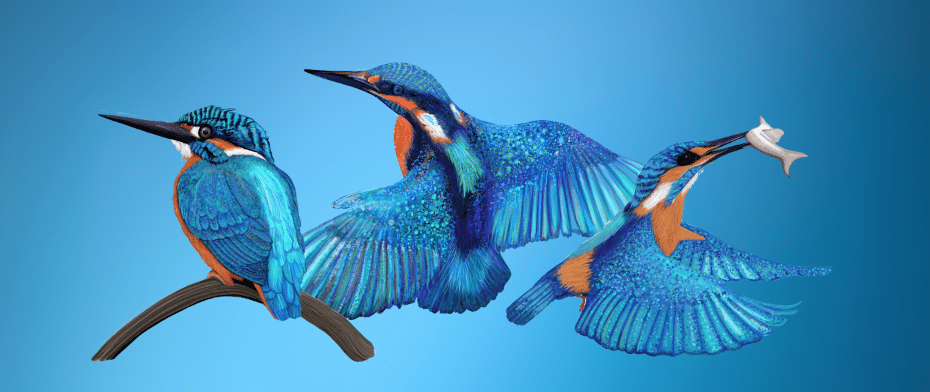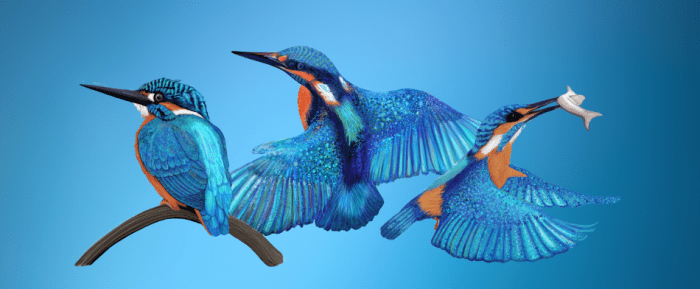Discovering the Enchanting World of KINGFISHERS
Welcome to a captivating journey into the world of one of nature’s most stunning birds—the Kingfisher. These brilliant avian jewels are a true testament to the beauty and diversity of wildlife. If you’re as fascinated by Kingfishers as I am, you’ll find this deep dive into their habitat, behaviour, and significance both enlightening and inspiring.
The Majesty of Kingfishers
Kingfishers, belonging to the family Alcedinidae, are known for their vibrant plumage and remarkable hunting skills. There are around 90 species of Kingfishers, with the Common Kingfisher (Alcedo atthis) being one of the most recognised, especially in Europe.
These birds are small to medium-sized, with large heads, long, sharp bills, and short legs. Their feathers often exhibit striking hues of blue, green, and orange, making them a visual delight.
Habitat and Distribution
Kingfishers are found across the globe, with the greatest diversity in tropical regions.
They thrive in a variety of habitats, including rivers, lakes, coasts, and wetlands. These environments provide the essential resources kingfishers need—clean, clear water rich in small fish and insects, which form the bulk of their diet.
If you are keen to see these birds in their natural habitat, the Wetland and Wildfowl Trust (WWT) sites across the UK offer excellent opportunities.
Hunting and Feeding
A kingfisher’s hunting technique is a marvel of nature.
Perched silently above the water, it waits for the perfect moment to strike. Once it spots a potential meal, it dives swiftly, often from a considerable height, into the water to catch fish with its sharp bill.
This precision and speed are what make Kingfishers such effective predators.
Breeding and Nesting
Kingfishers are also fascinating in their breeding habits. They typically nest in burrows, which they excavate in riverbanks.
Both males and females participate in digging these tunnels, which can be up to a meter long. Inside, the female lays a clutch of 5-7 eggs. Both parents share the responsibility of incubating the eggs and feeding the chicks once they hatch.
Conservation Status
While kingfishers are widespread, they face several threats that impact their populations. Habitat destruction, pollution, and climate change are significant challenges.
Organisations like the RSPB and WWT are crucial in their conservation efforts. They work tirelessly to protect and restore wetland habitats, ensuring these beautiful birds continue to thrive.
Kingfishers in Culture and Art
Kingfishers have not only captivated naturalists but also artists and writers throughout history. Their vivid colours and dynamic presence make them a favourite subject in various forms of art, from paintings to literature. Their symbolism often associates them with peace, prosperity, and love, reflecting their enchanting nature.
Experience Kingfishers Up Close
If you are eager to learn more about these incredible birds, I highly recommend visiting the RSPB and WWT websites. They offer a wealth of information on Kingfishers and other wildlife, along with opportunities to visit reserves where you can see these magnificent birds in action.
By supporting these organisations, you contribute to vital conservation efforts that protect Kingfishers and their habitats for future generations. Whether you’re an avid birdwatcher, a nature enthusiast, or an art lover, the kingfisher’s beauty and resilience will undoubtedly inspire you.
I also love to illustrate Kingfishers, take a look at some of my work at https://www.cathywhittallartist.co.uk
Thank you for joining me on this journey into the world of Kingfishers. Let’s continue to celebrate and protect the natural wonders that make our world so extraordinary.
Kind Regards
Cathy Whittall

